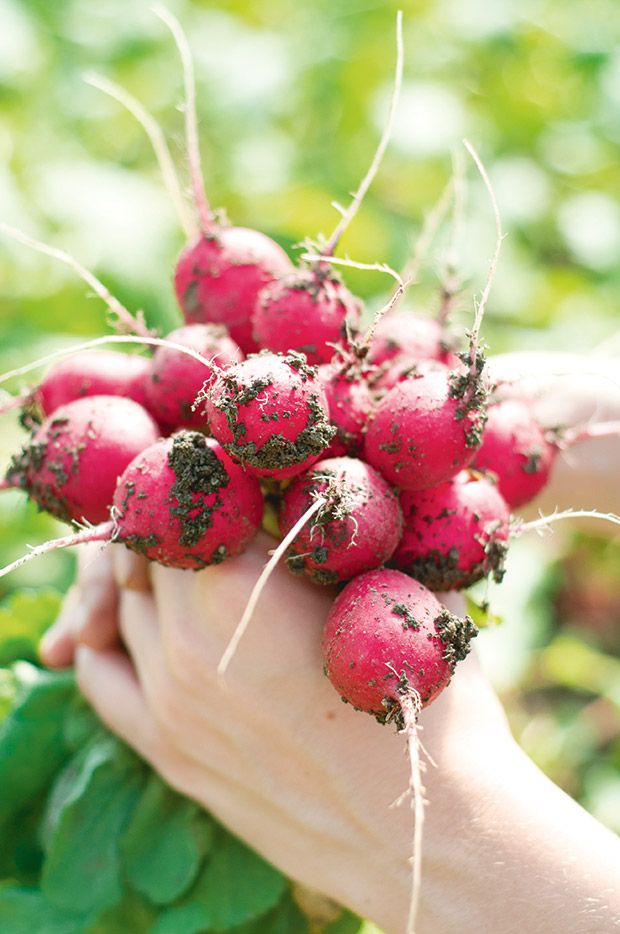How to grow the radishes of your dreams

Ruby-red or pearl-like, every kind of radish is a veggie patch necessity.
Words: Extract from Nadia: A Seasonal Journal
Radishes are hardy plants that produce a crisp, peppery, bulbous root eaten raw or cooked. The whole plant is delicious, from root to leaves, but the smaller the root or leaf, the more piquant it will be.
Radishes mature quickly and can be given short-term residences, acting as a quick filler crop, unless sown repeatedly – every two to three weeks – for a continuous supply.
Some gardeners like to grow them in rows alongside carrots, turnips, or beetroot, all of which are best grown quickly – that is to say, their growth should not be halted by lack of water or hot, dry weather, or their taste will be inferior, and their crispness will be crisp-less.
Sow seeds directly into loose (not compact), stone-free soil in full sun. In clay soil, plant in raised beds filled with a mix of topsoil, sand and compost.
Avoid fresh manure or highly nitrogenous fertilisers, as these will encourage leaves rather than roots. Longer varieties, such as daikon (white radish), require a deeper soil to accommodate their roots, so dig the soil to about 30cm to ensure it is loose.
A WORLD OF VARIETY
There is all manner of radishes to choose from, from the golf ball-sized ‘Cherrybelle’ to the baseball-sized ‘German Giant’, and the 5-10cm-long ‘French Breakfast’ to the 15cm-long x 3cm-wide heirloom ‘Fire Candle’. The latter has an almost fluorescent red skin while ‘French Breakfast’ has cute rose-scarlet oblong-shaped roots with white tips.
There is also the white radish, daikon, which is extremely cold hardy. The edible part of the daikon root may be 15-30cm long, but the very thin taproot – which breaks off when the plant is pulled from the ground – can grow as deep as 1.2m or more.
Thin seeds to 5cm for smaller varieties and 10-15cm for larger daikon.
QUICK TIPS
Best grown from seed
Can be sown year-round, though best done in the cooler months of spring and autumn
Space: 5-15cm, depending on the variety
Crops 30-55 days from sowing
Crop rotation: follow legumes
Family: Brassicaceae
 This article first appeared in Nadia: A Seasonal Journal Magazine.
This article first appeared in Nadia: A Seasonal Journal Magazine.

